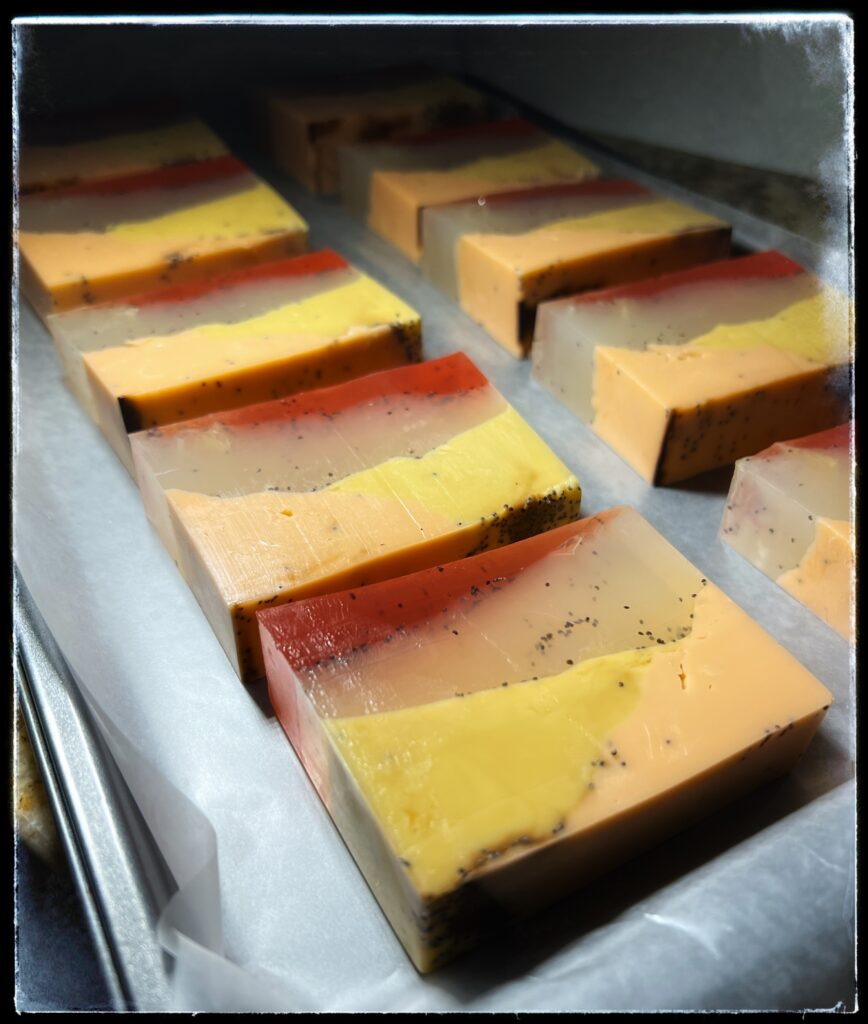It’s Biblical and Political Significance.
In this article, I contrast Biblical events which took place in the Jewish homeland over 3,500 years ago with those that are occurring today in the very same reborn Jewish State of Israel. But let us first begin with what took place back in AD 73 at a place called Masada.
Many people know of the epic battle that occurred at Masada and some, like me, have climbed to the very top of this gaunt fortress set within the stark, dramatic and majestic beauty of Israel’s Judean wilderness.
It is hard, however, not to be overcome with great emotion when standing in the same place where, in that fateful year of 73 AD, a desperate, tragic and yet heroic struggle for freedom took place during the Great Jewish Uprising against a brutal Roman occupation.
Perched high on this mountain overlooking the Dead Sea, once the winter palace of King Herod who had died 75 years earlier, 960 Jewish men, women and children who had fled Jerusalem resisted the might of Imperial Rome – the super power of its day. For three desperate years they had fought the Romans to a standstill until the 10th Legion of Flavius Silva finally overcame the valiant but doomed Jewish defenders.
Instead of being sent into slavery or forced to endure martyrdom, the Jewish resistors chose to take their own lives and thus deprive the Romans of inflicting infamy upon them. When the Romans beached the heights on top of Masada they were met with a terrible silence instead of the din of battle. The historian, Josephus, wrote this on what the Romans found as they finally broke through the battered walls, now aflame, of the Jewish defenses:
“And so met (the Romans) with the multitude of the slain, but could take no pleasure in the fact, though it were done to their enemies. Nor could they do other than wonder at the courage of their resolution, and at the immovable contempt of death which so great a number of them had shown, when they went through with such an action as that was.”
But before the Romans had conquered Masada, General Vespasian, who later became Emperor, had arrived and began his assault upon the Jewish homeland with a strategy of crushing the Jewish uprising by focusing his legions first in the north – the Galilee and the Golan. The idea was to crush the Jewish resistance with extreme brutality and discourage the Jewish forces in the center, southern and other parts of the country from continuing the rebellion.
After sweeping across the country from west to east, his Roman legions came to Gamla. Gamla was built on a steep hill shaped like the hump of a camel, hence the name Gamla (Gamal is the Hebrew word for camel). Gamla is surrounded by steep ravines and is only approachable by a footpath on the northeastern side. Masada, too, was only approachable by a footpath that was referred to as the snake path.
Considering that the Roman attack could only come from the one side, the residents fortified the wall on the eastern side. The Roman future Emperor, Vespasian, attacked the city for a month and finally breached the wall. His success was short-lived when many Roman soldiers were killed and forced to withdraw.
On the second attempt, the Romans managed to breach the wall in three locations and flooded the city with soldiers. According to ancient historian, Flavius Josephus, the defenders retreated up the steep hill and again successfully fought off the Roman army from the superior position, thus forcing a withdrawal.
In the third attempt, the Romans were not to be denied. They re-entered the city and ended the Jewish resistance, slaughtering thousands of inhabitants. The remaining 5,000 perished falling into the ravine while trying to escape or intentionally leaping to their deaths to avoid capture.
It was Vespasian’s son, Titus, who remained in Judea to besiege Jerusalem and destroy the Holy Jewish Second Temple.
We now come forward some 2,000 years to the modern history of the Golan.
The British Colonial Office arbitrarily gave the Golan away to France’s Syrian colony in 1923. The same Colonial Office reneged on Britain’s undertaking to honor the 1917 Balfour Declaration and create what was called the Palestine Mandate, which provided the Jewish people with a national home. In 1921/22 two thirds of the national home was torn away, east of the River Jordan, and given by Britain to the Hashemite Arab leader, Emir Abdullah, who named it Trans-Jordan. Immediately the territory was closed to any Jewish residency.
Syria attacked Israel in 1967 during the Six Day War and lost the Golan. Syria had occupied it for 44 years. Israel’s liberation of the Golan has lasted 53 years. Who then has possessed the Golan the longest?
Even as modern day Syria is convulsed in a murderous and bloody civil war with untold thousands dead and maimed, its dictator, Bashir al-Assad, of the minority Alawite Shiite sect, fighting for his political and physical life, yet spews forth his hatred of Israel with his call to seize the Golan Heights away from the Jewish state. But so do those “rebels” who are fighting him and thus remind us of the famous aphorism: “better the devil you know.” But two other interlopers entered into the horrendous and bloody maelstrom that is Syria. They are Russia and Iran.
Russia, as it has since the time of both Peter the Great and Catherine the Great, seeks a warm water port in the Mediterranean and a physical presence south of the Black Sea. Syria provides both. The Islamic Republic of Iran, now under the irrational yoke of the ayatollah and the mullahs desires one thing, a cataclysmic nuclear war that the Islamic leaders believe will usher in the Muslim messiah – the twelfth Mahdi. They have brought many terrorists and members of the Iranian Revolutionary Guard to the Golan border between Syria and Israel in order to exterminate the Jewish state, which it calls the Little Satan, and later to destroy with ICBMs the Big Satan, the United States of America. All this while they blatantly and illegally develop nuclear weapons.
Only in the last few days, members of the Israel Defense Forces (IDF) have found and dismantled Iranian made improvised explosive devices (IEDs) set by Iranian and Hezb’allah terrorists on the Syrian-Israeli border fence – the same lethal devices which have killed and maimed hundreds of U.S. service personnel in Iraq.
Iran has already built military bases in Syria and continuously arms its huge terror proxy army in Lebanon and Syria, Hezb’allah, with advanced missiles and weapon systems. This terrorist horde has an army bigger than most European forces and can deploy over 130,000 missiles aimed at Israel from southern Lebanon; all hidden in private homes, schools, hospitals and UN facilities, thus constituting a crime against humanity and a massive threat to the civilian population of the Jewish state.
Those of us who have stood on the Golan’s 1,700 foot steep escarpment, are struck by its immense strategic value overlooking Israel’s fertile Hula Valley and the beautiful harp shaped lake below, called in Hebrew, Kinneret (the Sea of Galilee.)
But during Syria’s occupation of the territory, no agriculture of any significance took place and no restoration of its terrain was ever undertaken by the Syrian regime. Instead, the Golan was a Syrian army artillery encampment whose sole purpose was to deliberately rain down an endless barrage of lethal shells upon Israeli farmers, fishermen and villagers.
The Biblical and post-Biblical history of the Golan Heights
What is its overwhelming and ancient Biblical significance to the Jewish People and to the now reconstituted Jewish state? Perhaps we should return primarily to the Biblical books of Joshua and Numbers.
Before the Tribes of Israel would cross the River Jordan and enter the Promised Land, the first among them had already taken possession of territory east of the River Jordan. These were the half tribes of Manasseh, Gad and Reuben who liberated the Bashan and Gilead from the Amorites.
Biblical Bashan incorporates today’s Golan Heights. Gilead is the fertile land, which lies in what is the north western area of today’s Kingdom of Jordan which itself occupies two thirds of the original Palestine Mandate promised as a National Home for the Jewish People. Jordan is therefore Palestine.
Gilead: ” … a little balm, and a little honey, spices and myrrh, nuts and almonds” (Gen 43:11.)
It was Canaan, west of the Jordan, which would pose the formidable challenge to Joshua bin Nun, the general leading the Israelite tribes. So it was that Moses, the Lawgiver, spoke to the children of Gad and Reuben thus:
“Shall your brethren go to war, and shall you sit here?” (Numbers 32:6) The leaders of the two tribes replied that they would indeed send their combat men west into Canaan and fight alongside their brethren while their families would remain behind.
“We will build sheepfolds here for our cattle and cities for our little ones. But we ourselves will go ready armed before the children of Israel until we have brought them unto their place: and our little ones shall dwell in fenced cities because of the inhabitants of the land. We will not return unto our houses until the children of Israel have inherited every man his inheritance.” (Numbers 32: 16-18)
The story of reconstituted Israel and its people.
Today this is mirrored in the Biblical story of those ancient ancestors. The young men and women of modern Israel have gone again and again from their homes; be they villages, towns or cities, to the borders and established communities there in times of danger and peril, just like those young men did from the Biblical tribes of Gad and Reuben.
The Jewish pioneers of today in Judea and Samaria – the Biblical heartland known today falsely as the “West Bank” – are no different. But the world has chosen to demonize them as “obstacles to peace” and an impediment to the creation of a fraudulent Arab state to be called Palestine; a state that has never existed in all of recorded history; certainly not as a sovereign independent Arab state.
The pioneers are now called by the pejorative term “settlers” and their homes and farms derisively called “settlements.” It matters not to the infernal chorus that sings the international siren song of hate and ignorance that these pioneers are returned to their ancestral homesteads and seek to take up their ploughshares to sow, to plant and re-possess their ancient homeland.
But the purpose of this article is also to learn about the Biblical and post-Biblical history of the Jewish descendants of the tribes of Gad, Reuben and Manasseh.
The Bashan region, now known as the Golan Heights.
This is the part of the Biblical territory promised to the Patriarch Abraham and the people of Israel for an everlasting covenant – the Covenant of the Parts – recounted in Genesis 15. The city of Bashan was a refuge city (Deut, 4:43).
During the Biblical period of the Jewish Kings, a battle high on the Golan took place between King Ahab and the army of Aram. A Jewish victory occurred at the present site of Kibbutz Afik, which lies a few miles east of Lake Kinneret, the Sea of Galilee.
After the end of the Babylonian Exile, and during the Second Temple Period, Jews returned to their homes on the Golan. Subsequently the returnees were attacked by gentiles and Judah Maccabee brought his forces up to the Heights to defend them.
At the conclusion of the Hasmonean Period, King Alexander Yannai finally re-conquered the Golan and Jews returned yet again. They rebuilt communities in central Golan, including the major cities of Banias and Susita, which formed part of the defense of the Golan.
During the last days of the June, 1967 Six Day War, second century Jewish coins were found on the Golan. These ancient coins were inscribed with the words, “For the Redemption of Holy Jerusalem.”
In the succeeding Talmudic Period, Jewish communities flourished and expanded. Archaeologists have found the remains of 34 synagogues on the Golan. Jewish life on the Golan largely ended after the defeat of the Byzantine army by Arabs from Arabia carrying the new banner of Islam and the region descended into a long period of neglect.
But Jewish life returned yet again in the latter years of the 19th century when members of the Bnei Yehuda society from Safed purchased land on the Golan. In 1891, Baron Rothschild purchased some 18,000 acres in what is present day Ramat Magshimim.
It is quite possible that the Christian story of the Transfiguration took place somewhere on the slopes of Mount Hermon, as Jesus and the disciples were previously noted to be in the region of Caesarea Philippi which sits at the base of snow-capped Mount Hermon.
The Jewish pioneers of the First Aliyah (immigration) began to farm land they had purchased in the Horan region until the Turkish Ottoman occupiers evicted them in 1898. Their land was then seized, and in 1923 the entire Golan was given away by Britain to the French Colonial Mandate over Syria and Lebanon.
Zionist leaders had earlier demanded the Golan be included within the new Jewish National Home because of its immense historical roots in Biblical and post-Biblical Jewish history. But Jewish liberation of the ancestral land was not possible until Israel was forced to fight for its very survival during the 1967 Six Day War.
The Golan is only 60 miles from Haifa and the lofty slopes of snow-covered Mount Hermon, the highest point in the region, have been the eyes and ears of Israel.
The Golan Heights were officially annexed to Israel in 1981. It was the left wing Israeli Prime Minister, Yitzhak Rabin, who sadly offered to give the Heights away in 1994 in the ever vain hope of a lasting peace with subsequent Syrian regimes. However, there can be no justification in ever abandoning any ancestral and Biblical Jewish land, which was given in an eternal Covenant by God (HaShem) to the Jewish People.
Since then, Israelis have winced at wrenching offers made by subsequent left-leaning Israeli governments and politicians who declared publicly their desire to give the entire Heights to the Syrians in return for a delusional peace. The overwhelming majority of Israelis, however, adamantly are opposed to any such suggestion.
The Baker-Hamilton Iraq Study Group had suggested that a way out for the United States from its Iraqi imbroglio would be for Israel to give the Golan Heights away to Syria. This sop to the Arabs at Israel’s expense, it was believed by the ISG, would bring Syria into responsible nationhood and wean her away from support of the “insurgents” attacking Iraqi and U.S assets. Of course this was before the successes of the “Surge” instituted by General Petraus made such appeasement moot.
Obama’s carrot to the Syrian dictator was predictably the Golan Heights.
U.S. President Obama mistakenly renewed diplomatic relations with Syria as a way, he believed, of distancing the Arab dictatorship from its alliance with Iran. This was yet another delusional act by the then U.S. President whose foreign policy was predictably in tatters.
But Obama’s carrot to the Syrian dictator predictably was to be the Golan Heights. After his re-election in 2012 Obama chose to yet again appease Arab and Muslim dictatorships by applying brutal pressure upon Israel and force it to give away yet more of its Biblical patrimony. Fortunately his malign pressure was successfully resisted.
With the likelihood of a Biden/Harris administration taking power next January 2021, there are already great fears that Biden – or more realistically Harris – will overturn President Trump’s recognition of the Golan being an historical part of the Land of Israel. At the same time the U.S embassy in Jerusalem may be yanked out from the eternal and undivided Jewish capital and put back in Tel Aviv.
To put any trust in the Iranian backed Syrian regime, is truly risky. Besides which, Iran has already stated that it’s ambition is also to take the Golan from Israel at the same time that it plans on making Syria, Iraq and vast swathes of Muslim lands a future part of an all-encompassing Islamic Caliphate.
And consider, again, this. The British Colonial Office gave the Golan away to France’s Syrian colony in 1923. Syria aggressed against Israel from 1948 until 1967 and lost the Golan. Syria had occupied it for 44 years. Israel’s liberation of the Golan has lasted 53 years. Ask yourself then, who has possessed the Golan the longest and who has millennial historic, spiritual, Biblical and post-Biblical attachment to it?
Currently, and under the most friendly of policies ever by a U.S. President towards the Jewish state, President Donald J. Trump, the Golan and Jerusalem are now recognized as historical and integral parts of the State of Israel.
Victor Sharpe is a prolific freelance writer with many published articles in leading national and international conservative websites and magazines. Born and educated in England, he has been a broadcaster and has authored seven books including a collection of short stories under the title, The Blue Hour. His four-volume set of in-depth studies on the threats from resurgent Islam to Israel, the West and to Judeo-Christian civilization is titled, Politicide: The Attempted Murder of the Jewish State.
















0 Comments